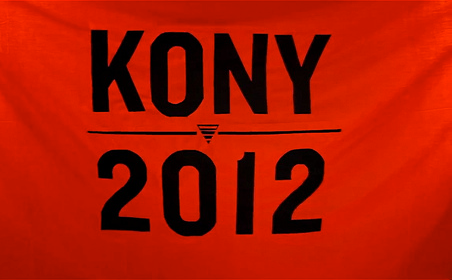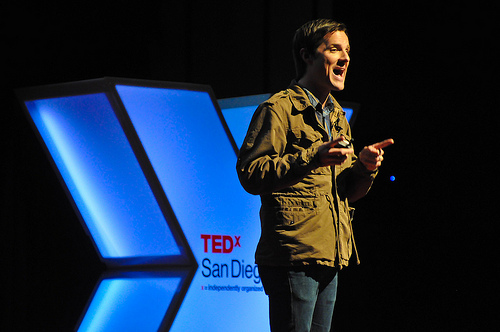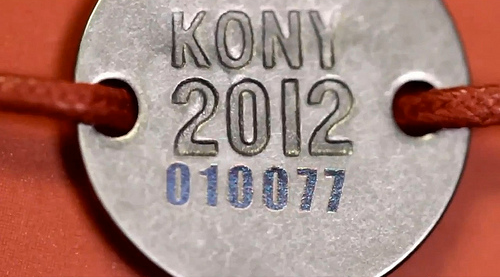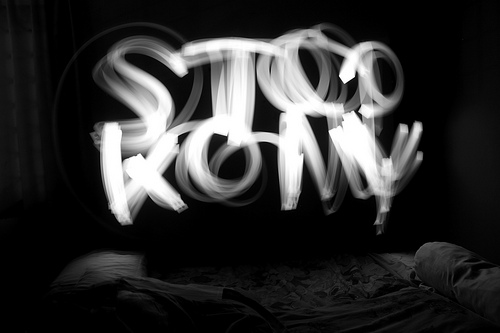Print Edition: March 14, 2012
A history of Ugandan conflict
Uganda has a violent past – after gaining independence from Britain in 1962, it suffered under multiple military dictators, resulting in thousands of civilian deaths and a poverty rate comprising almost 40 per cent of the population.Joseph Kony formed a rebel group in 1987 opposing the Ugandan government. This group later transformed into the Lord’s Resistence Army (LRA) when Kony inherited the followers of Alice Auma (A.K.A. Alice Lakwena). Lakwena led rebels in what she called the Holy Spirit Movement, and in absorbing this group, Kony also took over Lakwena’s claim of receiving orders from both God and the spirit world – combining Christian values and traditional Achuli beliefs.
In the mid 1990s, the LRA was driven into Sudan and was harboured by the Sudanese government. Despite being largely forced out of Uganda, this civil war between the LRA and the Ugandan government has continued from the original inception of the LRA in 1987 to present day.
Kony has now been the leader of the LRA for 26 years. At the peak of their existence, the LRA had an estimated 3000 rebels; that estimate is now around 400. However, the rebels who have survived the increasing international pressure are the upper echelon: the commanders, the officers, and Kony’s trusted finest. These 400 rebels are split into small groups, currently hidden in the dense jungles of Uganda, DR Congo, and Sudan. To date, the LRA have abducted and brainwashed an estimated 30,000 children to use as child soldiers.
Invisible Children as an organization
In 2003, filmmakers Jason Russell, Laren Poole and Bobby Bailey were young and eager. They travelled to Africa in search of a story, not expecting to walk into a war in which children were trained, brutal militants. The issue moved these men towards creating Invisible Children (IC), a non-government organisation (NGO) working towards bringing down militia leader, Joseph Kony. More specifically, IC states their vision for Kony 2012 in three points:
1) Make the world aware of the LRA. This includes making documentary films and touring them around the world so that they are seen for free by millions of people.
2) Channel energy from viewers of IC films into large-scale advocacy campaigns to stop the LRA and protect civilians.
3) Operate programs on the ground in LRA-affected areas that provide protection, rehabilitation and development assistance.
In a recent press release, IC made their financial documents completely transparent, providing a link to their audited financial documents for the last five years. They break down their budget simply: “The organization spent 80.46 per cent on our programs that further our three-fold mission; 16.24 per cent on administration and management costs; and 3.22 per cent on direct fundraising in Fiscal Year 2011.”
Basically, Invisible Children splits resources and finances into roughly equal thirds and puts each chunk towards each of their three objectives. It breaks down into awareness, advocacy programs to gain governmental support, and programs in Uganda to help child soldiers. This viral campaign, well-constructed website and supporting videos have fulfilled Invisible Children’s awareness goals above and beyond their wildest dreams.
An overview of Invisible Children and the virality of social media
The Kony 2012 video has received all sorts of praise and criticism over the past week. With over 100 million views on both YouTube and Vimeo combined, it has been made clear that social media has the power to draw the attention of millions. The topic has trended worldwide on Twitter, hundreds of friends shared video links over Facebook, e-mail, and passed on the link by word of mouth – people insisted everyone must watch this 30-minute video. Invisible Children, a non-governmental organization, used every social media website to their advantage to raise awareness about the violence and suffering happening to the people of Uganda – specifically the children.
Critique and backlash
After the Kony 2012 video made its rounds and acheived “viral” status, a backlash to the campaign came in full swing. Students, scholars and citizens all had opinions they wanted to share with the world, and as fast as the video spread, so did opinions on Invisible Children as an organization: was there a possible hidden agenda? Critiques focused on the transparency of financial records, charity navigator rating, lobbying efforts, the “white man” savior complex, the strategy to secure the arrest of Kony, oversimplification of a complex issue and the current presence of the LRA. On Thursday, March 8, Invisible Children issued a press release attempting to answer some of the concerns put forward by the public. IC staff disseminate many of the concerns by including a transparent link to their financial records over the past five years, the reasons why they used medium they chose and the ultimate desire to raise awareness. The organization also notes, “we’ve done our utmost to be inclusive, transparent and factual as possible.” They added: “If encountering something you disagree with, suggest an alternative to what we are doing – and we will absolutely take heed. If it’s a matter of opinion, taste, humour, or style: we apologize, and will have to agree to disagree. As the poet Ke$ha says, ‘we are who we are.’”
Moreover, IC provides a list of other organizations on their website under “networks” that also strive to provide aid in Uganda and surrounding areas affected by Kony and the LRA. Instead of fighting against the people who have criticized their work, they have equipped their website with many other options if the public wants to donate to the cause but not through IC. The organization reminds critiques to focus on the pertinent issue, “Let’s focus on what matters, and what we DO agree on: Joseph Kony needs to be stopped.”
Invisible Children accepts donations, but money is not the main thing they lobby for; they ask for awareness and the strength to dig deeper and find a charity that is worth donating to.
Our guide to stopping Kony
If after watching that heartbreaking video you want to contribute, there are a couple of options open. Invisible Children is sold out of Kony action kits and bracelets, but you can still donate directly to the cause. The other NGO’s listed below include financial analysis and whether or not they are religiously affiliated.
What Invisible Children has done for this cause is given it a brand: by adopting Kony as the face of the LRA (and subsequently the issue of child soldiers in general), Invisible Children has gained more awareness for Uganda than any other organization. Unlike donations, this awareness not only supports what Invisible Children is trying to do, but also every other organization trying to help Uganda. So although Invisible Children has taken flack for only putting thirty per cent of their donations directly towards Ugandan children in programs and scholarships, the rest is still very much a part of the game plan.
Regardless of whether you support Invisible Children’s financial delegation, the fact remains that child soldiers are a very real issue. Invisible Children admits in their press release that they have simplified the issue immensely – but they stand by their decision to use Kony as the face for the issue. Kony might only be the head on the LRA snake, but catching and putting him to justice is the first step on the path. Kony is now literally the face of this issue; making him famous makes the issue famous, and this campaign is all about building awareness.
Child Soldiers Initiative was founded by Lieutenant-General Roméo Dallaire (Retired), the author of They Fight Like Soldiers, They Die like Children, after his experiences dealing with child soldiers while serving in Africa. This organization works on a three-prong system as well, pursuing advocacy, research and awareness, and special military training. Any donation to this cause roughly breaks down into four pieces: training forces and volunteers takes 40 per cent, research 15 per cent. Building awareness in developed countries takes another 15 per cent, and staff salaries and administrative costs comprise the remaining 30 per cent.
The Amatsiko Organisation guarantees 85 per cent of money donated to the project will be used to directly benefit the children that they support. The remaining 15 per cent is used for running costs, overheads etc. of the project. The organisation also provides a list of needs such as mosquito nets, blankets and other materials that can be purchased by supporters, then Amatsiko delivers the goods.
War Child is a smaller organization that works in Uganda as well as the DR Congo, Central African Republic, Iraq, and Afghanistan. Staff work directly on the grounds of these countries helping former child soldiers, children put in prison and girls at risk of rape and violence. War Child guarantees 90 cents of every dollar is used to aid specifically, 10 cents for administrative and other costs.
The National Christian Foundation (NCF) is one of the largest grant-making Christian organizations in the world. Founded in 1982, the NCF has received over $4.6 billion in donations, granting $3.2 billion to those in need. If calculated evenly over the 30 year inception, 46 thousand is used annually for administrative costs, 107 million directly being used for the children in need. A complete break down of the allocated funds is available on their website.








